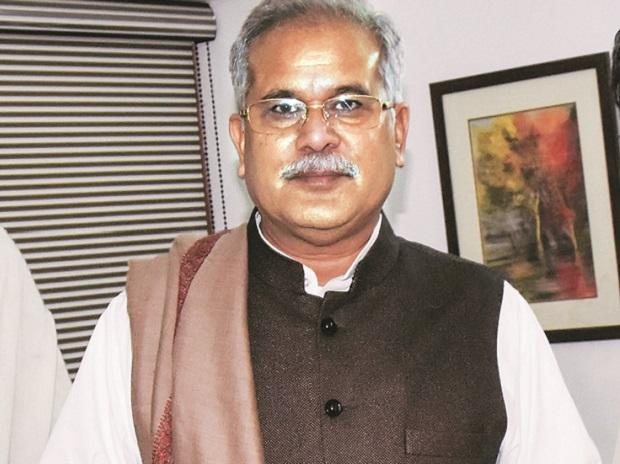Chhattisgarh Chief Minister Bhupesh Baghel is set to launch ‘Godhan Nyay Yojana’ on Monday. The scheme aims to put money in the pockets of people living in the rural areas and also solve the problem of stray cattle.
Under the ‘Godhan Nyay Yojana’ Chhattisgarh government will purchase cow dung at the rate of Rs 2 per kg. “This scheme will turn cow dung into a profitable commodity,” Baghel said.
The scheme also aims to make cow rearing economically profitable and to prevent open grazing in the state, as well as help with the problem of stray animals on roads and in urban areas.
The Chhattisgarh CM told Business Standard that Godhan Nyay Yojana comes on the heels of his government’s Rajiv Gandhi Kisan Nyay Yojana, which was launched in May. Both have the same objective of infusing money in the rural economy.
Under the Rajiv Gandhi Nyay Yojana, Rs 5,700 crore is being disbursed to 1.9 million farmers of paddy, maize and sugarcane, in four installments. “After receiving the first instalment under the scheme, farmers bought 3,000 new tractors in the state,” Baghel noted.
The state already has a system in place for tendu patta collection, paddy procurement and that of minor forest produce. Procurement of cow dung will be done on the same lines, according to the officials.
Baghel said the state government has taken steps to strengthen the rural economy by improving and conservation of narwa (construction of check dams in nullahs to improve groundwater), garuva (improving health of livestock, constructing gouthans or cowsheds), ghuruwa (digging pits for organic manure) and bari (traditional kitchen gardening).
The CM said his government has constructed gouthans in 2200 villages of the state, and are in progress in another 2,800 villages. “So, soon 5,000 villages will have gouthans. We are working towards developing these as livelihood centres,” he said.
Excerpts from an interaction with Chhattisgarh CM Bhupesh Baghel
How is the state trying to deal with the negative effects of the lockdown on its economy?
Industrial activity caught pace as soon as ‘unlock’ was rolled out, production started in 80 per cent industries. More than 150,000 people are getting employment. Some industries had continued in during the lockdown also, including production of 2.7 million metric tonnes in iron and steel industries.
Economic indicators have improved, including the state’s GST collections, sale of motor vehicles and agriculture sector production. The state’s GST collection increased by 22 per cent over the previous year. There was three-and-a-half times increase in vehicle registration in June compared to the previous month of May.
Chhattisgarh tops the country in providing 100 days of employment in MNREGA. It is in second place in the country in employment generation, providing 8.85 crore man days of employment in the first quarter itself. So far, 55,981 families have been given 100 days of employment. Chhattisgarh alone accounts for 41 percent of the total employment generation households in the country. Unemployment rate was 3.4 percent in April, a 12-month low.
Chhattisgarh is also number one in the country in the collection of minor forest produce. The annual target of collecting forest produce in the state was achieved in six months. So far, the collection of forest produce of Rs 105 crore has been done. The state government now purchases 31 minor forest produce on support price. Mahua’s support price was raised from Rs 18 to Rs 30.
How will the ‘Godhan Nyay Yojana’ help rural economy?
The scheme will generate additional income and increase employment opportunities. A complete system is being put in place for implementation of the scheme. The government will procure cow dung and prepare vermicompost in order to move towards organic farming. There is a huge market for organic farming. Vermicompost will be sold by cooperative societies.
In our state itself, not only farmers, the forest department, agriculture, horticulture, urban administration and other departments require a large amount of fertilizer at the time of plantation and horticulture cultivation. Distribution of vermicompost fertilizer to farmers will be done as a commodity loan by cooperative societies, banks.
You have said this will take care of the problem of strays in urban areas.
We are launching this scheme from July 20, the day of Chhattisgarh’s Hareli festival, which is associated with greenery and harvesting. In the first phase, cow dung will be procured from 2408 cowsheds in rural areas and 377 cowsheds in urban areas.
In urban areas, the scheme will prevent movement of stray animals on roads and highways, ensure availability of high quality organic manure for farms, and also improve urban sanitation with proper disposal of waste produced by cattle.
As part of our ‘mission clean city’, which is already being implemented, municipal-level registration of each cattle rancher in urban areas will be done. Cattle will be tagged with owner’s name, address, mobile number to the neck of each animal after the survey to ensure accountability of cattle owners if their cattle are found in the open.
We have decided to procure cow dung at Rs 2 per kg (including transport cost). Quality of cow dung for procurement has also been specified.
For vermicompost training, nodal officers are being appointed by district collectors for every gouthan in rural and urban areas. Self-help groups will also be provided training.
Cowsheds will be constructed in all 11,630 gram panchayats and then in 20,000 villages in a phased manner. District collectors have been directed to earmark land for cowshed construction and ensure training of self-help groups.
